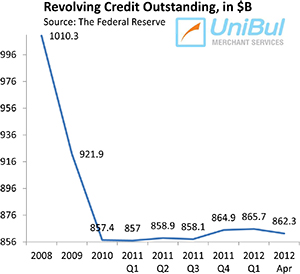False Information and High-Risk Merchant Accounts

One of the biggest issues we have to deal with when evaluating new merchant account applications is merchant fraud. Quite often new applicants would attempt to “beautify” their paperwork to make themselves look more appealing to underwriters. Most of the time these are innocent fudges of some non-essential numbers, typically about things like number of employees and sales projections. However, in their attempts to improve their chances for approval, many applicants resort to much more drastic measures by falsifying information.
I had to deal with just such a case, and on a larger-than-usual scale, over the course of this past month. An international telemarketer had reached out to us asking for merchant accounts for their several businesses, which, combined, were generating about $3 million in monthly sales revenues, give or take. The merchant’s volumes were growing fast due to adding capacity to their call centers, I was told, so new merchant accounts were needed and preferably with new acquirers. As all international businesses which have been accepting credit cards for years do, this one had some special requirements, which all sounded reasonable and I got down to work feeling quite optimistic that I would be able to quickly wrap this up and give the merchant what they needed. After all, their paperwork was complete and they were promptly following up on all of my requests for additional information. Well, things turned out to be much more interesting than I first anticipated and I thought I’d share my experience with you.
Getting the First Approval
Having collected the merchant’s paperwork, I proceeded to examine the package and, on first review, it all looked good. The merchant’s incorporation paperwork was all in order, the financial statements looked good, the credit checks didn’t uncover anything unsavory and the merchant had a solid processing history with two acquiring banks. So I contacted one of our acquiring partners, which I thought was best suited to handle this type of business and asked them to take a look at the merchant. They too liked what they saw and I could now make a specific proposal to the merchant. Well, I did what I always do: came up with a rate and terms that took account of the merchant’s industry and volume. It was a proposal, which I knew the merchant could accept, even if they attempted to haggle over the rate, which they sometimes do just for the sake of it. In the event, the snag took an altogether different form.
The merchant didn’t like my choice of an acquiring bank. The owner, who was also the person I was in contact with throughout the process (which is always the best way to do it), told me that friends of his had had bad experiences in the past with acquirers in the part of the world where my acquirer was located, so he would decline the proposal, rather than take his chance with a troublesome bank. I did what I always do and did not argue with him, beyond pointing out that there was more than one acquirer in that particular country, which all followed their own business practices. After all, I was certain that I would be able to easily find another acquirer for my merchant and do so quite quickly. Well, this is when the fun began.
Skeletons in the Closet
I contacted another acquirer and asked them to review the package. By the way, for those of you who are not in the industry, I couldn’t just send the paperwork to a bunch of banks around the world to speed up the process. The thing is that, when acquirers notice that a particular application package shows up all over the place, they get wary, very wary. I’ve always had trouble understanding why this is the case, but it is. In any case, I sent the package to one of my partners and was expecting a swift follow-up. Well, the acquirer did get back to me within a couple of days, but not with the message I was expecting. The merchant’s paperwork, I was informed, was fraudulent, all of it! I didn’t believe that — after all, I had already verified the validity of some of the paperwork, so all of it could not possibly be fraudulent. I thought that instead the acquirer probably didn’t like either the industry (banks regularly change their attitudes) or the slightly high chargeback rate, but thought that citing fraud as a reason for their decision would make it sound better. Nevertheless, a nagging suspicion began to form into my mind.
So I contacted another acquirer and this one took much longer than the previous two to get back to me. When they did, the merchant was once again accused of falsifying documents. This time the acquirer was more specific: the processing statements and the bank letter were fraudulent. I don’t know why they thought that the bank letter was fraudulent — I had verified that the merchant had an active account with the bank in question, although they didn’t release information about the available funds. Still, at this stage there could be little doubt that something was wrong. But what?
See, I was reasonably certain that my merchant was doing the volumes he was claiming. After all, if he got approved and then failed to generate the stated volume, he would quickly find himself in trouble and risk losing his merchant account. And I knew that the merchant knew that — having talked to merchants for many years, I am now able to immediately identify the ones with industry experience and this one had plenty of it, that much was certain. So why go into the trouble of falsifying processing statements? Well, there was only one possibility that I could come up with — the merchant was aggregating the volumes of several businesses, meaning that all of these businesses were processing their sales through a single merchant account. This practice is explicitly prohibited by Visa and MasterCard and, of course, the merchant would have been perfectly well aware of that as well.
But even this explanation wasn’t good enough. Let’s assume that my hypothesis was correct. The thing is that if such a combined volume ($3 million per month or so) were split among even as many as a dozen businesses, each one of them would more than likely have sufficient volume and get an approval by applying on its own. Yes, some, or all, of the supposed individual businesses could have been blacklisted by the associations, but even then there are ways to find solutions for them. True, the terms would be considerably worse than what a $3-million-a-month business could get, but it would be all legal and accounted for. And I can tell you that the discount rate is never the most important consideration for experienced, high-volume merchants. I had discounted the possibility that the merchant may be using its merchant accounts as fronts for very hard-to-place businesses, because he knew that we would be contacting some of their customers from time to time to make sure the merchant was selling what they applied for.
In any case, the process is still ongoing and I am yet to secure a second approval for my telemarketing merchant. Eventually, I will find what I’m looking for, but the merchant would get much less favorable terms than he was offered in my initial proposal.
The Takeaway
So what is the moral of this story? Well, if you are a merchant who is hiding something, but still manage to get your application approved, you should accept the proposal and go about your business. Then just follow the rules and hope for the best. Alternatively, you can tell your prospective processor exactly where you stand at the very beginning to avoid any complications, which are likely to arise further down the line, even if you do get a merchant account with falsified documentation. The thing is that there is always a solution available for a high-volume business, which is legally incorporated, follows the rules and can keep its chargebacks under control. Even if you get yourself placed on MATCH, there would still be a solution available for you. There is no doubt in my mind about which option you should take, but the choice is yours.
Image credit: Techtalkafrica.com.


